Ancient Korean Food Culture
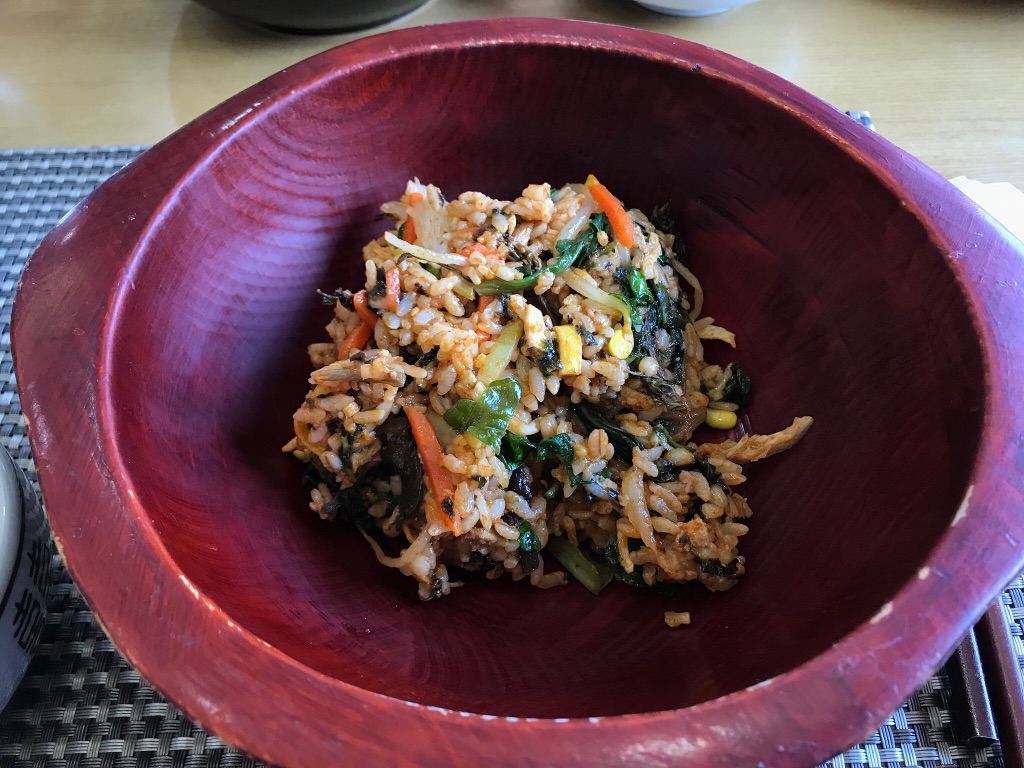
Earlier the same day I saw the temple, the tour stopped by this place: Jeonggangwon-Korea Traditional Food Culture Experience Center in PyeongChang. Here we learned hands-on to make Korean rice cakes (Tteok). A little demo of this in the video at the end of this post. Some pics of what we saw:
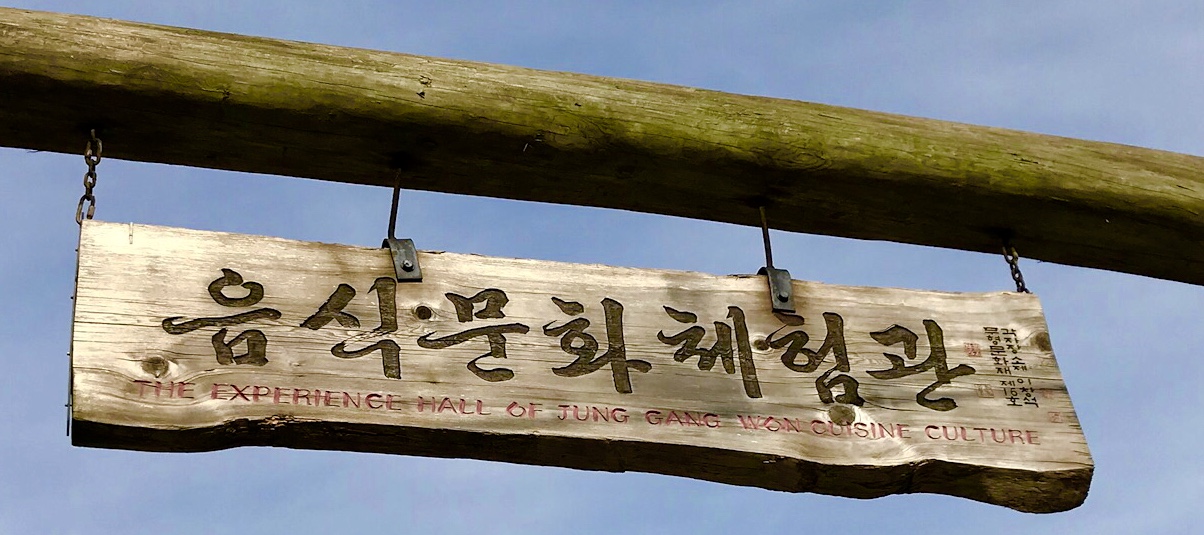
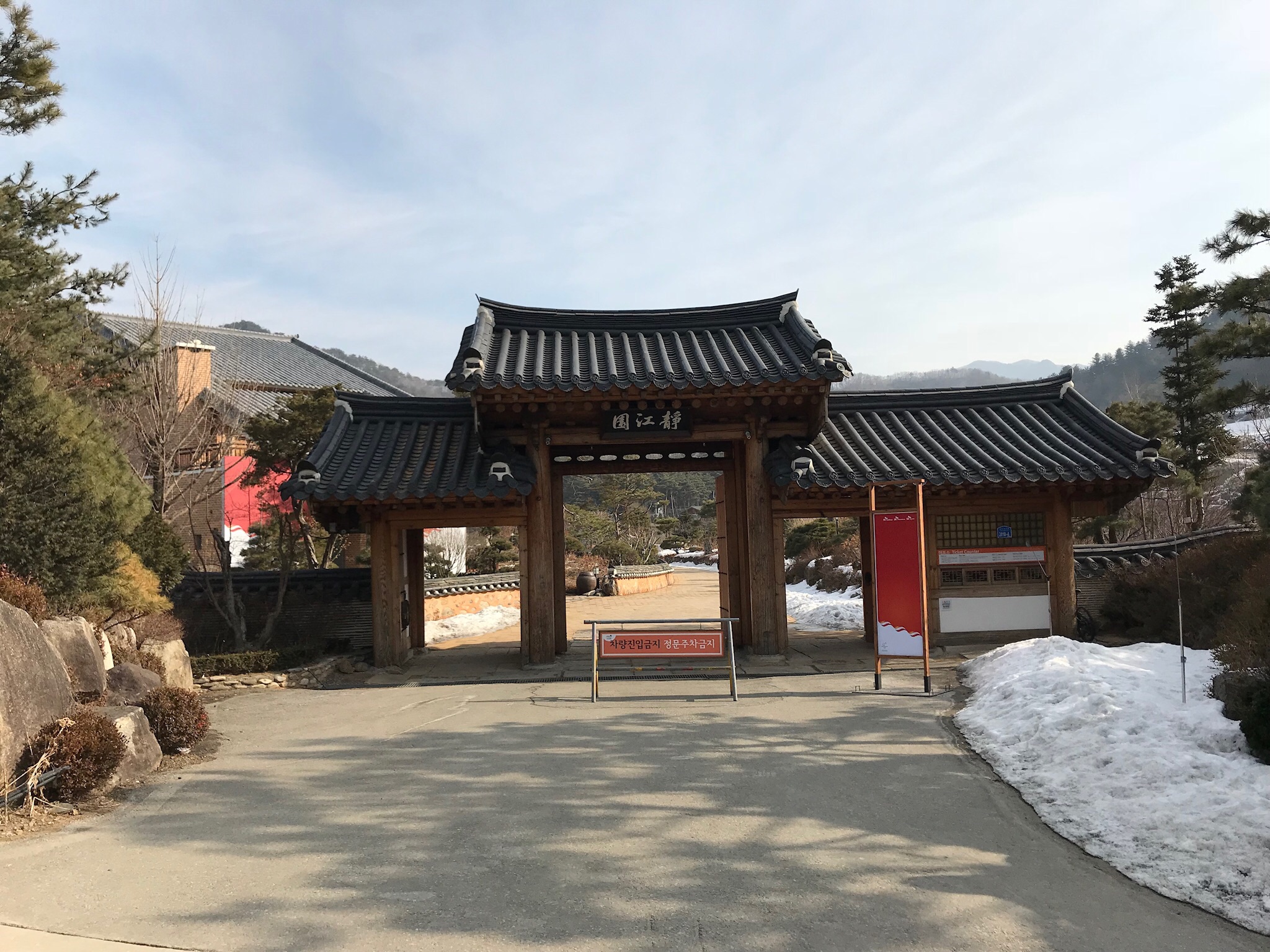
The sign and main gate entrance.
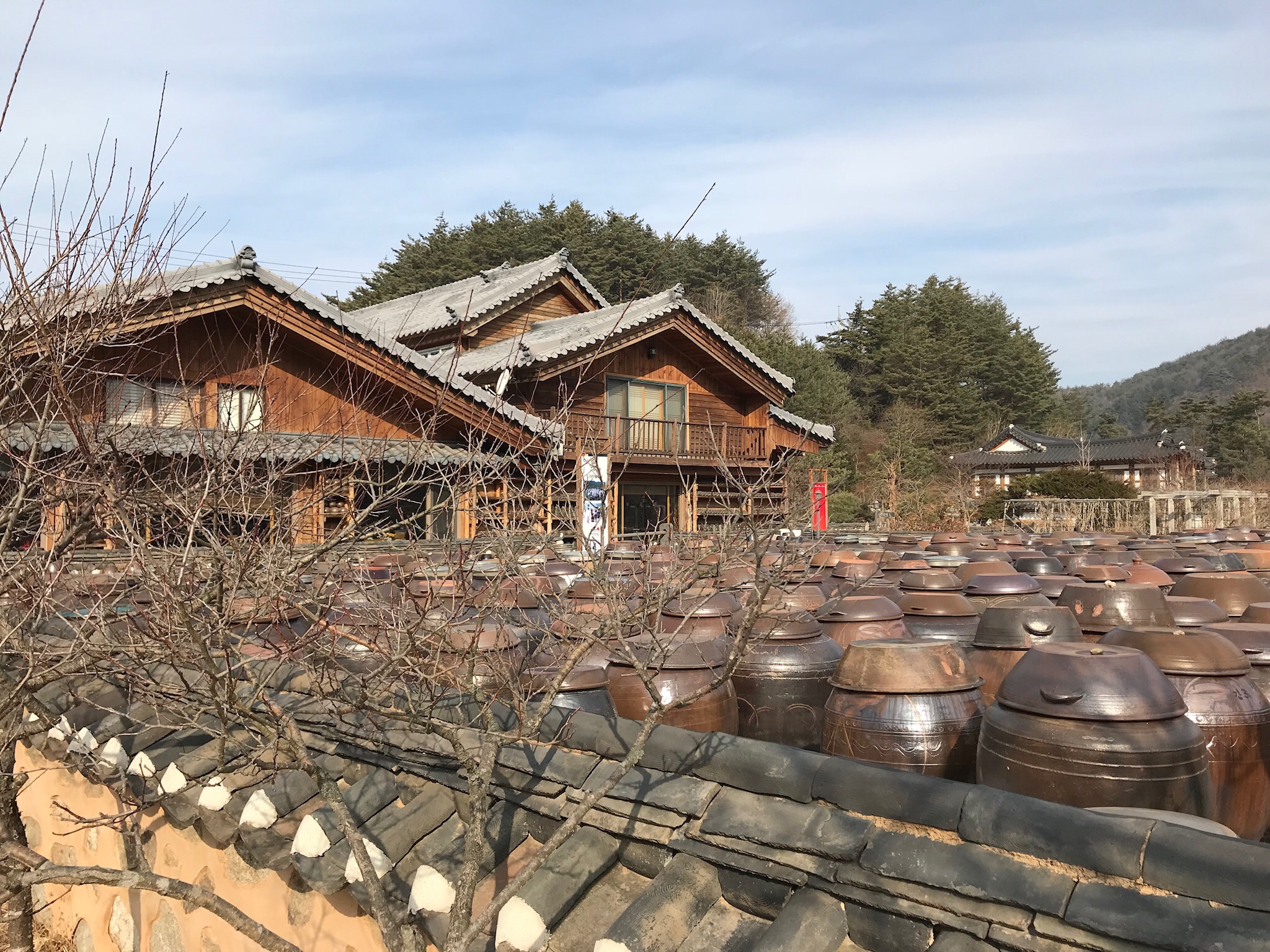
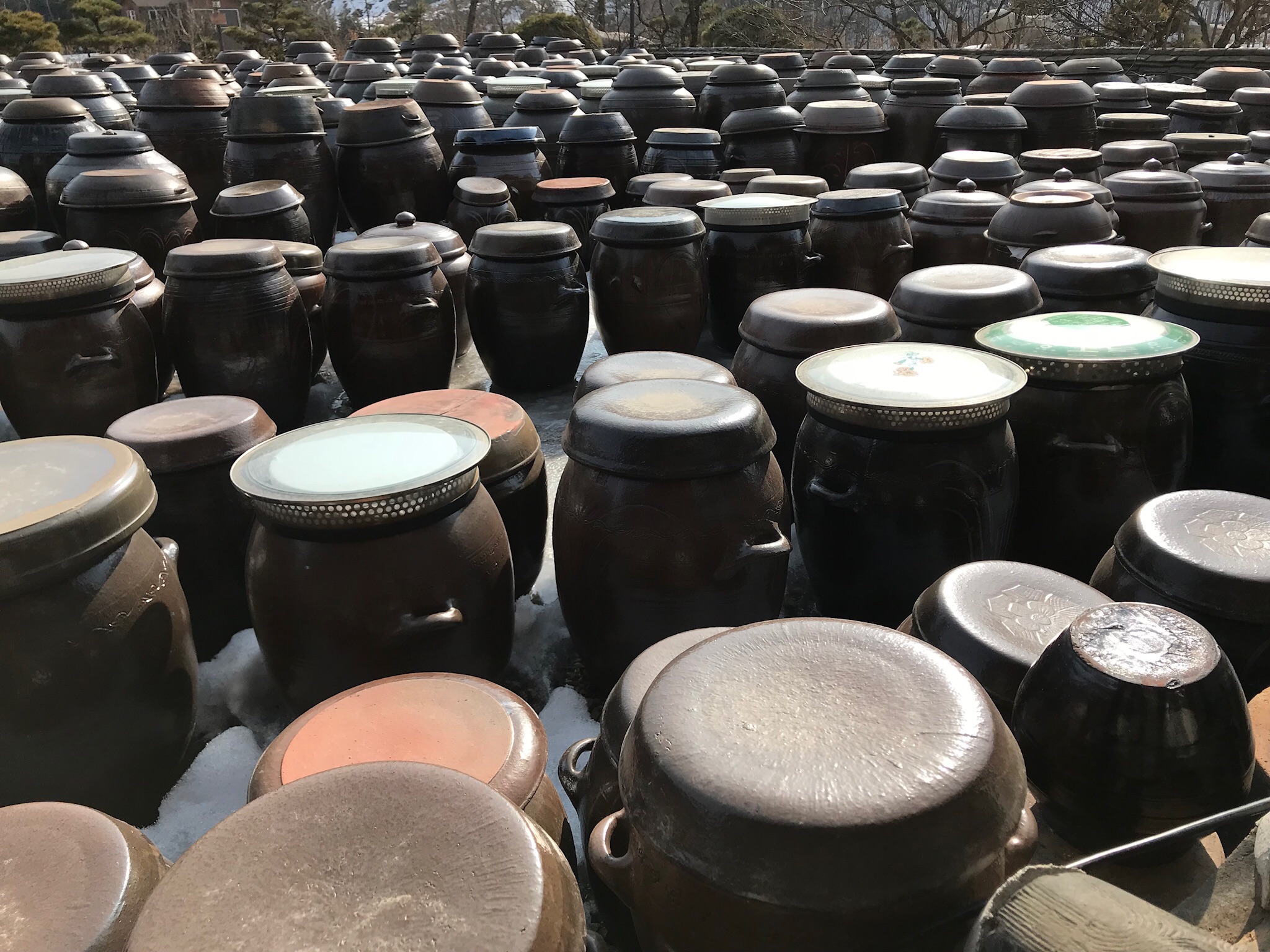
These pots are holding soy paste, which will ferment in these for about a year.
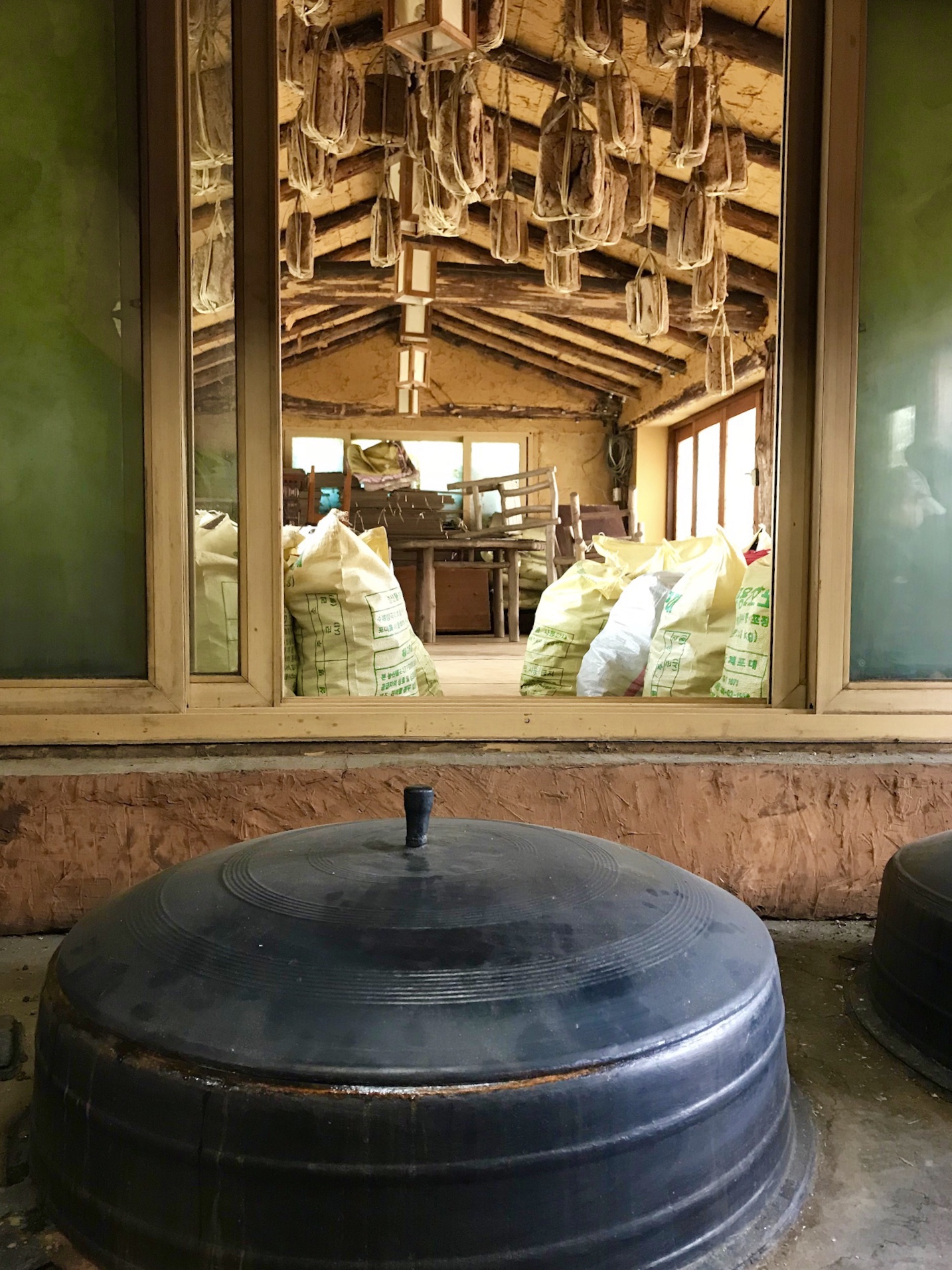
As part of the process to make soy blocks, they are boiled in these pots before being left in the pots outside to fermentate. An ingenious dual use for fire: fire is made below these pots, then the heat outlets to clay ducts under the adjoining floor to heat the room of the house.
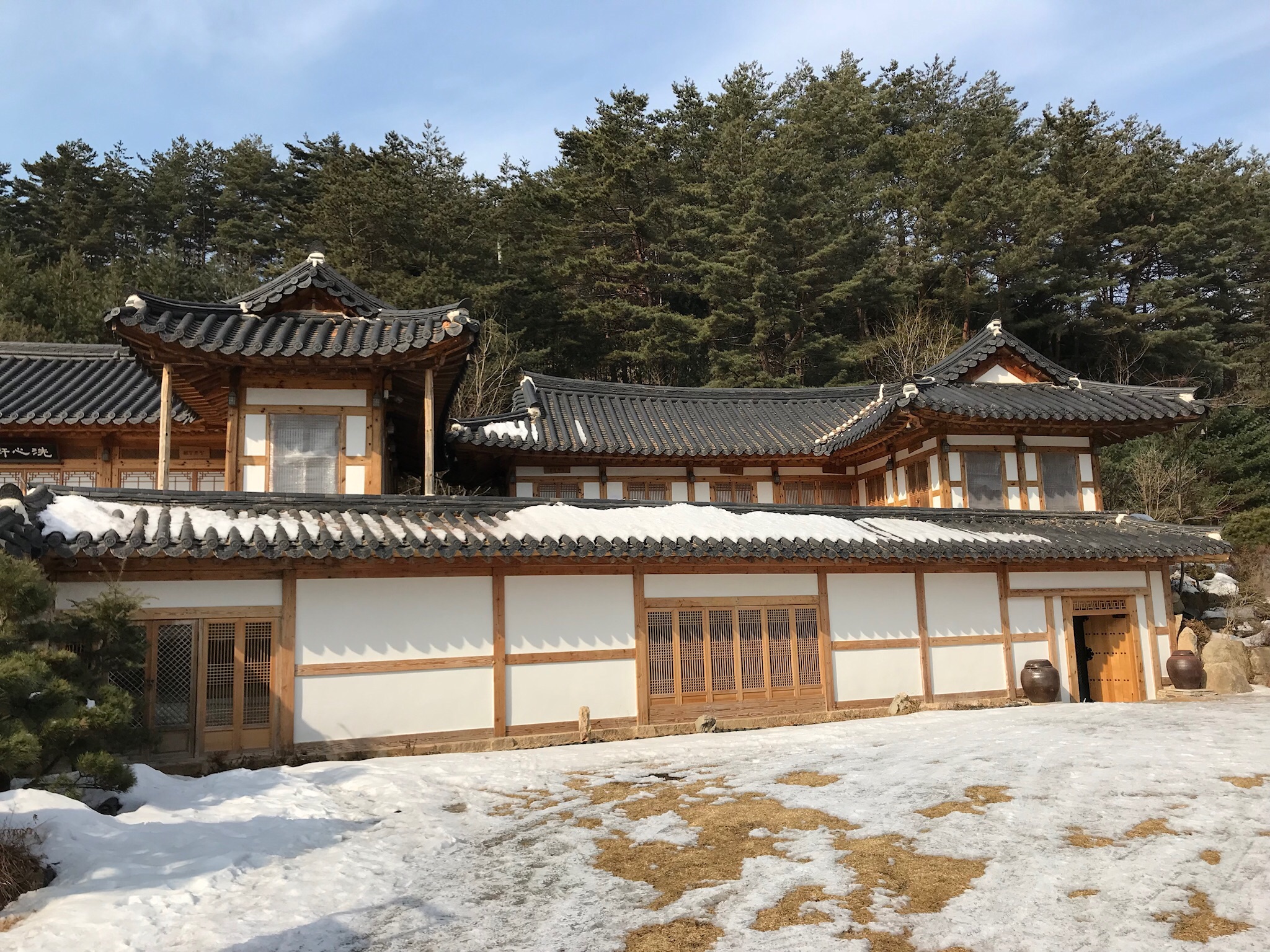
Also on the property are living accommodations for travelers. Below is a look into one of the rooms.
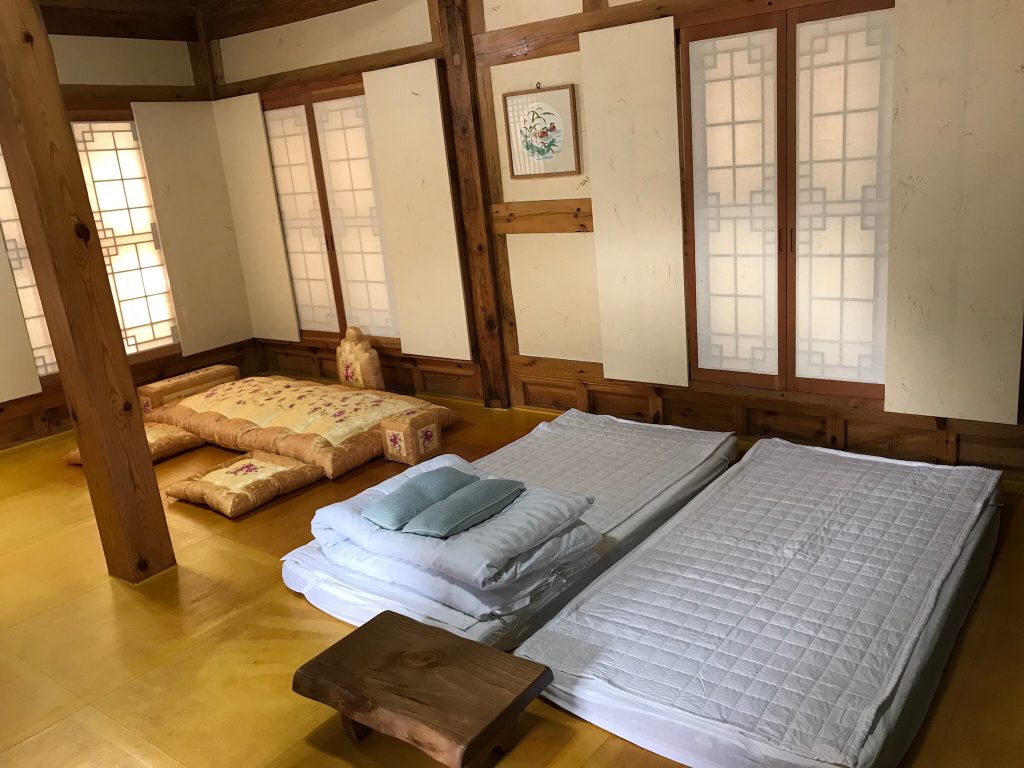
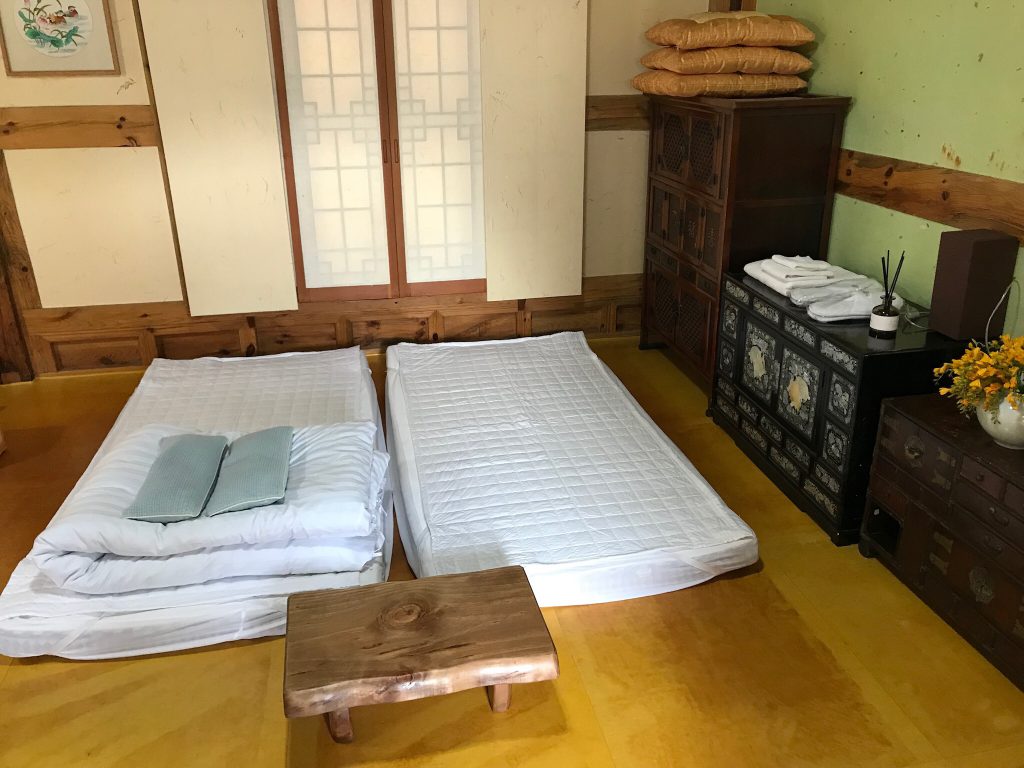
As has been the way for centuries, the Koreans heat their homes through warming the floor. This is why: beds are mats on the floor, the traditional way to eat a meal is sitting on the floor, and why you always remove your shows before entering a living space. Since you are always so close to the floor, removing shoes keep it clean. Traditions still practiced today. Even the ultra-modern smart home apartment I’ve been staying in has heated floors.
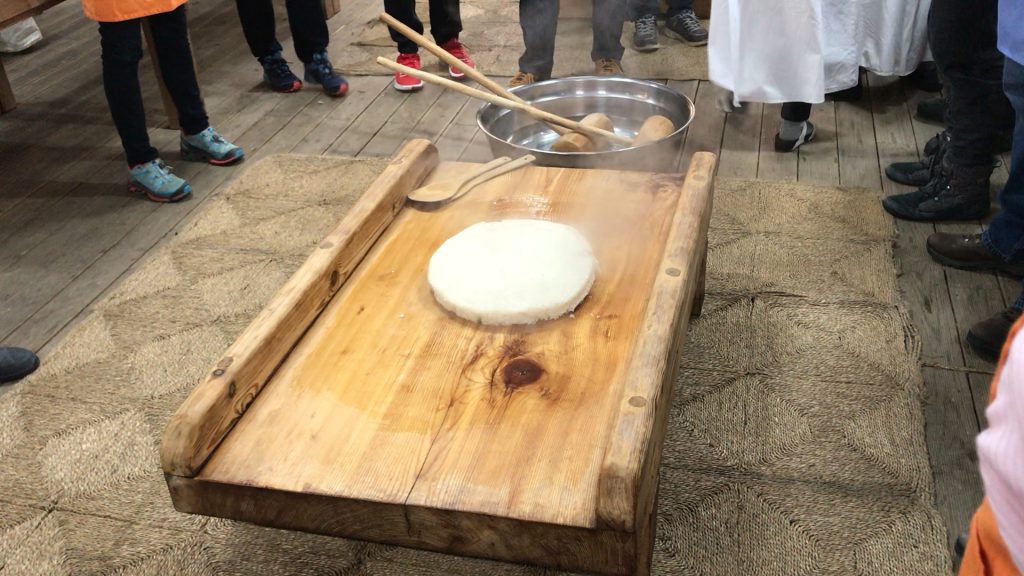
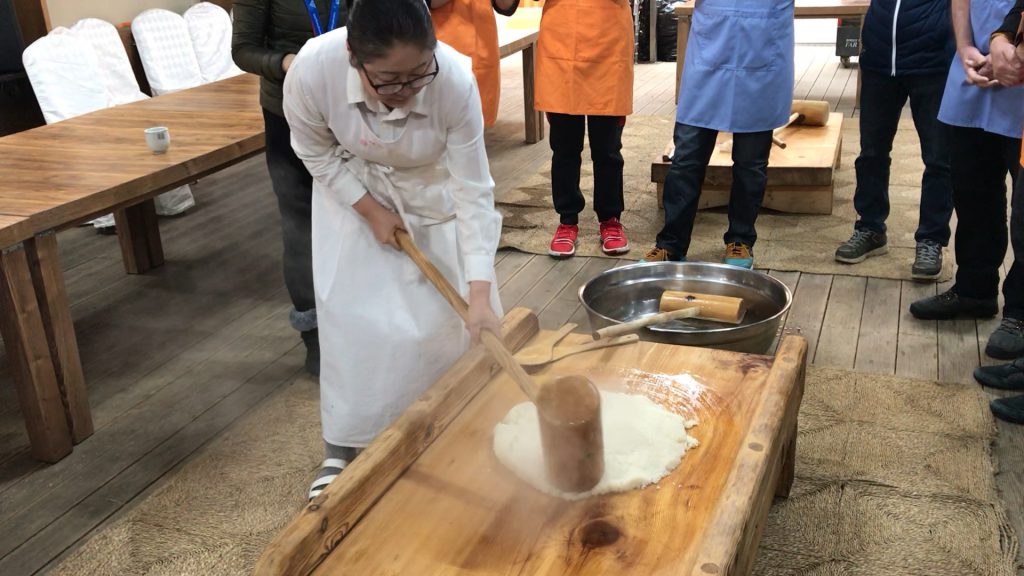
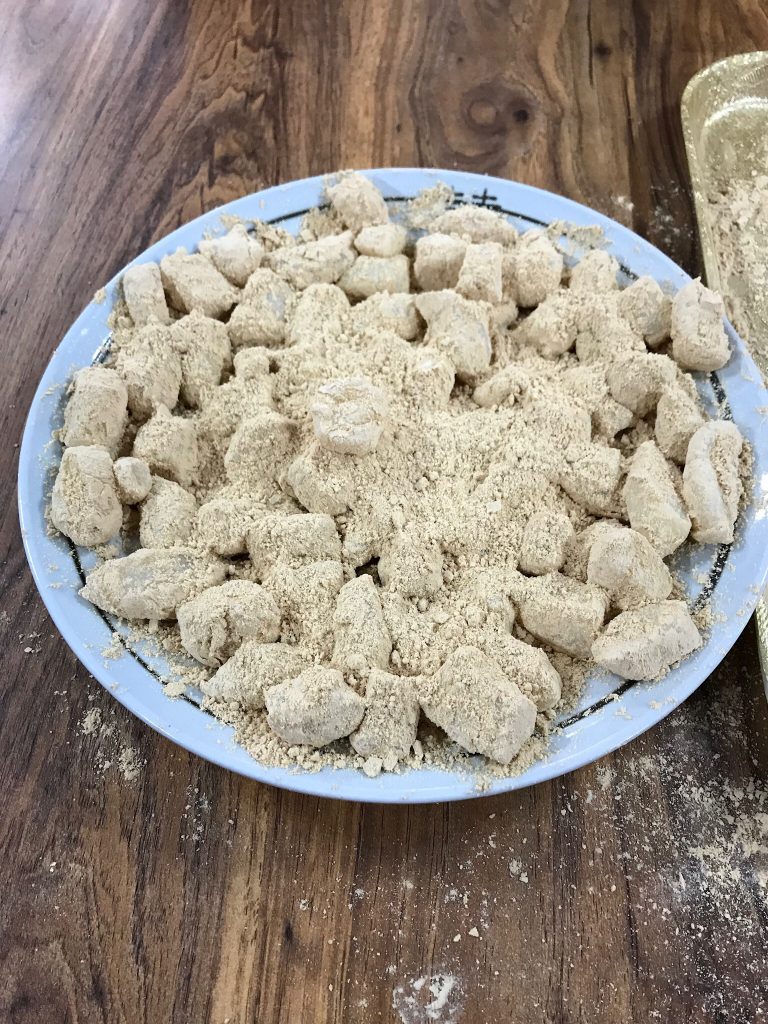
Next was a food prep demonstration. Here we had a hands on opportunity to make “Injeolmi,” a rice cake coated in soy powder (what is made in those pots you saw above). Cooked white rice is repeatedly pounded and kneaded, pounded and kneaded, until it has a firm cake filling like paste consistency. Then we cut it into nugget pieces, and roll it in the soy paste. Pretty good, but very filling and chewy. Below is a video of some of the process:
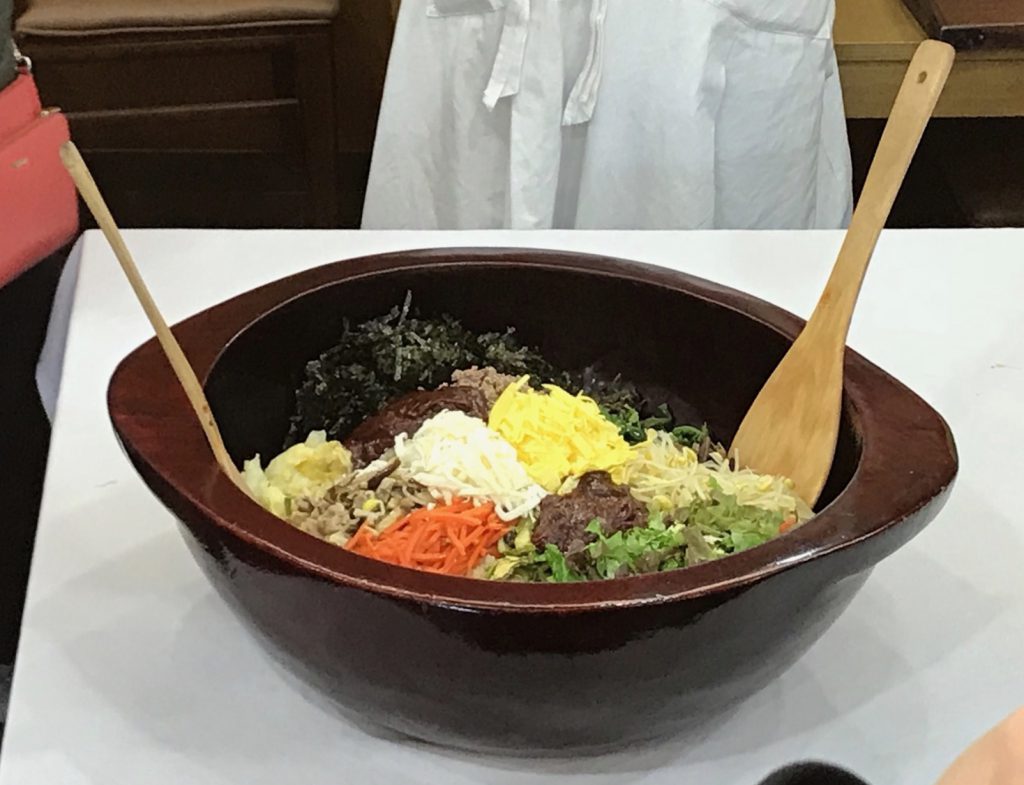
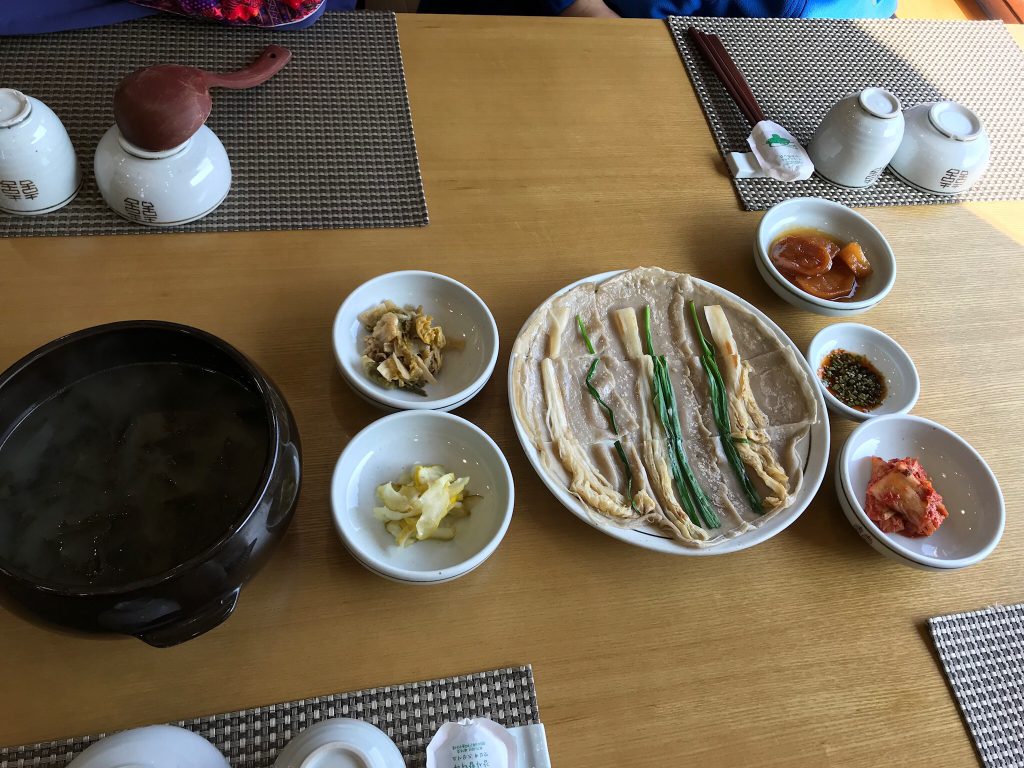
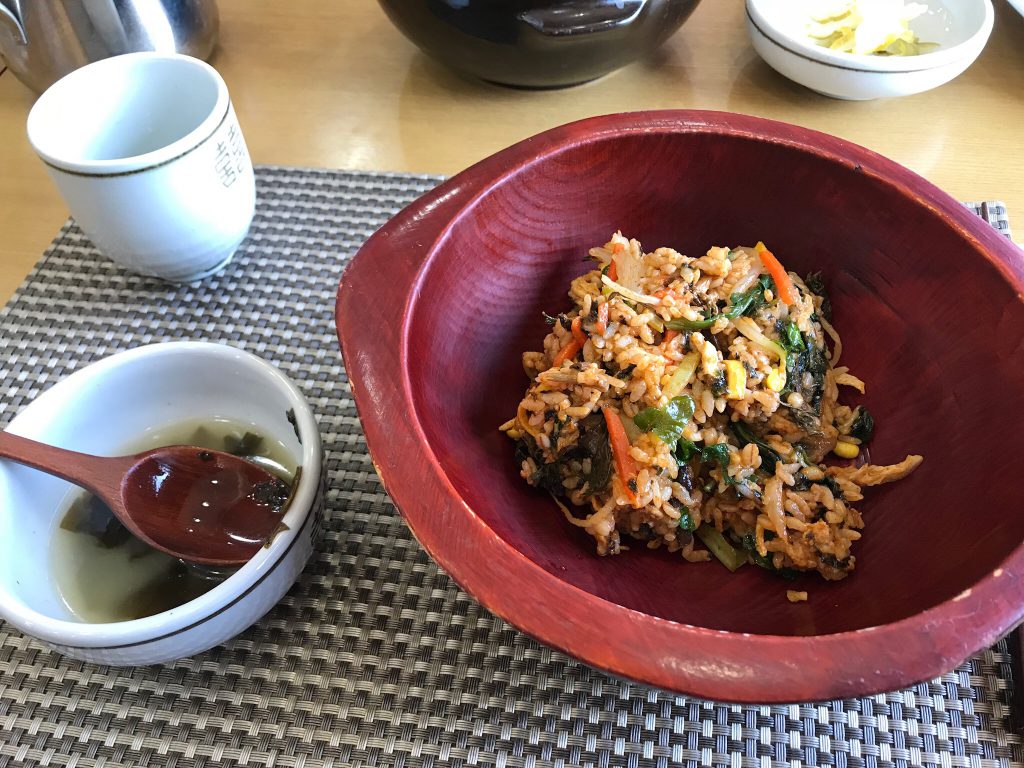
And for a finish: lunch! This is “bibimbap,” cooked white rice mixed with about 10 organic vegetables, fine Korean beef, and a red pepper paste all mixed together. They were emphatic about asking if anyone in the group was vegan before adding the beef, although to be honest, I couldn’t even see or taste the beef. It was delicious, and my goal is to make this at home. It was served with a seaweed soup and accompanied by several side dishes including what I think was called “memiljeon,” a pancake made of buckwheat (middle pic above).
Visit their website for more about this amazing place: http://www.jeonggangwon.com/index_en.do
